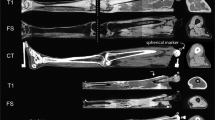Abstract
Purpose
Minimally invasive fetal surgery is expected to improve therapeutic outcomes, and surgical robots are expected to aid the dexterous manipulation of fragile fetal tissues. Although robots are currently used for surgery on soft tissues, practical information concerning the viscoelastic characteristics of fetal tissues is lacking. Hence, the mechanical properties of fetal tissues should be quantified to design robotic devices that facilitate computer-assisted fetal surgery.
Methods
Shear creep tests were performed on abdominal wall tissues of rat fetuses, aged 16–20 days, and on the brain, lung, and liver tissues of adult rats. Viscoelastic properties of these tissues were evaluated using a rheometer. Histological sections of fetal rat tissues were stained with hematoxylin and eosin.
Results
The viscoelastic properties of fetal tissues were quantified using models. Fetal tissues displayed 2 distinct phases of fragility, i.e., gelatinous characteristics with a markedly lower viscoelasticity before day 18 than after day 19. Concomitantly, skin morphology matured remarkably after day 19. As judged by the morphology, the gestation age of 19 days in rats corresponds to that of 23 weeks in human fetuses. From our data, we prepared artificial phantoms; phantoms made from 1.0% gelatin showed mechanical properties very similar to those of the fetuses before day 18.
Conclusion
We observed unique mechanical characteristics in fetal tissue, a previously unknown target for surgical robots. From the data obtained, we produced phantoms that have similar viscoelastic properties, aiming at designing surgical robots capable of handling early fetuses.
Similar content being viewed by others
References
Johnson MP, Adzick NC, Harrison MR et al (2001) Part III. Fetal anatomic defects amenable to treatment. In: Harrison MR, Evans MI, Adzick NS, Holzgreve W (eds) The unborn patient: The art and science of fetal therapy. 3rd edn. W. B. Saunders Company, Philadelphia, pp 259–500
Danzer E, Sydorak RM, Harrison MR, Albanese CT (2003) Minimal access fetal surgery. Eur J Obstet Gynecol Reprod Biol 108(1): 3–13
Berris M, Shoham M (2006) Febotics–a marriage of fetal surgery and robotics. Comput Aided Surg 11(4): 175–180
Tsubouchi K, Enosawa S, Harada K, Okamoto J, Fujie MG, Chiba T (2006) Evaluation of the relationship between the viscoelastic stress and strain of fetal rat skin as a guide for designing the structure and dynamic performance of a manipulator for fetal surgery. Surg Today 36: 701–706
Hrapko M, Van Dommelen JA, Peters GW, Wismans JS (2006) The mechanical behaviour of brain tissue: large strain response and constitutive modeling. Biorheol 43: 623–636
Yoshizawa A, Okamoto J, Yamakawa H, Fujie MG (2005) Robot surgery based on the physical properties of the brain—physical brain model for planning and navigation of a surgical robot. In: Proceedings of the 2005 IEEE Int Conf Robot Autom, pp 904–911
Holbrook KA, Odland GF (1975) The fine structure of developing human epidermis: light, scanning, and transmission electron microscopy of the periderm. J Invest Dermatol 65(1): 16–38
Harada K, Bo Z, Enosawa S, Chiba T, Fujie MG (2007) Bending laser manipulator for intrauterine surgery and viscoelastic model of fetal rat tissue. In: Proceedings of IEEE Int conf robot autom, pp 611–616
Yamashita H, Matsumiya K, Masamune K, Liao H, Chiba T, Dohi T (2008) Miniature bending manipulator for fetoscopic intrauterine laser therapy to treat twin-to-twin transfusion syndrome. Surg Endosc 22(2): 430–435
Author information
Authors and Affiliations
Corresponding author
Rights and permissions
About this article
Cite this article
Harada, K., Enosawa, S., Zhang, B. et al. Evaluation of fetal tissue viscoelastic characteristics for robotic fetal surgery. Int J CARS 6, 797–802 (2011). https://doi.org/10.1007/s11548-011-0563-7
Received:
Accepted:
Published:
Issue Date:
DOI: https://doi.org/10.1007/s11548-011-0563-7




